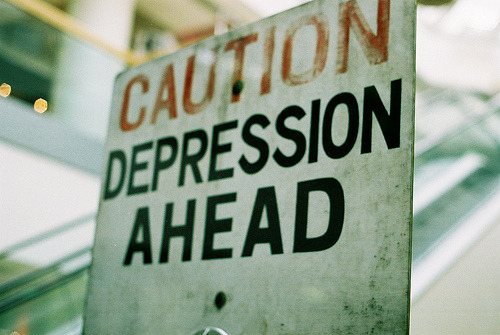A few weeks ago, I read an absolutely marvelous post by Wheelchair Dancer, a letter to a TAB friend explaining why her approach to recovery and improvement was so different than theirs. It stemmed from an incident where the friend was “enthusiastic about how much better I seemed” and Wheelchair Dancer was unable to respond in the same way as her friend. She talks about how her improvements are not permanent, how she lives “in a cycle of event, recovery, plateau, and event. Sometimes, the recovery is actually an ‘advance or an improvement.’ But often, I struggle to get back where I was before. So, I don’t attach any great meaning or significance to recovery. I simply can’t.”
She talks about how she works on her body not because she is intent on achieving a cure or focused on “recovery,” but “because it give me great pleasure to do so. I am so excited to see what it can do, to push it to its limits.” And how that work is not part of a drive “to work for total healing and cure because I have come to understand a different politics of the body, one in which there is neither cure nor giving up.”
I have been sitting with this since I read the post, and I believe these ideas have immense power for me. While my illness is of the mind, not the body, I think the idea of defining for myself what “getting better” means, what goals I am trying to achieve with my treatment and medications, how I understand my own cycles of event, recovery, plateau, and event, is crucial to reclaiming my agency.
When I first got sick, I had a very different idea of what getting better meant. I was so overwhelmed with suicidality and self-harm that my idea of ‘better’ was any situation in which I felt in control of whether or not I was going to harm myself seriously. I didn’t feel safe in my own presence – I relied on watchers, babysitters, overseers – and wanted nothing that to be able to be with myself without fear. Once I achieved that (thanks, Effexor!), my next idea of getting better was to get rid of the tension and energy that would overwhelm my body periodically, forcing me to pace the halls, back and forth, back and forth, for hours on end, even while my body groaned with exhaustion.
A few years later, my conception of getting better had shifted completely. In my mind, getting better would mean I didn’t have to take those hateful pills every single day, would cut the tether between me and that prescription bottle. It would mean I didn’t have to have yet another first appointment with a psychiatrist where I rattled off my litany of trauma and despair. It would mean I never again worried about what thoughts would come to mind if i saw an x-acto knife or a pack of razor blades. It would mean I could put it all away, be cured, be sane, be normal, be like everyone else.
Pursuing that idea of getting better caused me significant harm. (In short: taking myself off all my meds all at once with no psychiatric supervision and dropping all therapy and counseling while moving across the country to a place where I had virtually no support system turned out not to be the best thing for me, and it took me about a year to pull out of the hole I dug for myself.) That idea of getting better was incompatible with my first conception of improvement – not being constantly buffeted by the desire to die and the periodic storms of energy that made me feel like a puppet dancing on the end of a string controlled by someone else. And when it comes down to prioritizing conceptions of improvement, I will always pick “not dead.”
Today, my idea of getting better has evolved significantly. It has nothing to do with taking pills or not taking pills, it does not insist on or exclude any methods of treatment. It is focused instead on me – can I do the things I want to do? Do I feel safe? And it relies on some things I’ve observed about myself and my friends with disabilities and the qualities that make me feel confident about our abilities to weather crisis events, to come through the other side and keep moving through that cycle of event, recovery, plateau, and event. There are three qualities I think are essential: 1) the ability to know myself and my illness well enough that I know when things are starting to go wrong, when crisis is approaching, 2) knowing what things can help ameliorate or prevent crisis for me personally, and 3) being able to ask for help and having meaningful help available. With those things, I know I can move through the cycle of crisis. It does not mean I can avoid crisis – I no longer think avoiding crisis is an essential component of “getting better.” I now think my ability to survivie crisis and move through it and beyond it is what it means to get better.
Which means, of course, that I am better. I’ve done it. I’ve achieved my vision. And that is worth more to me than I can ever say. And that is the power of taking agency over these ideas, of defining the term for myself. (And only for myself – I do not believe I have the ability or right to define what ‘getting better’ means for anyone else.)
(Again, thanks to Wheelchair Dancer for such an amazing post on this, which I recommend you click through to read in its entirety.)



